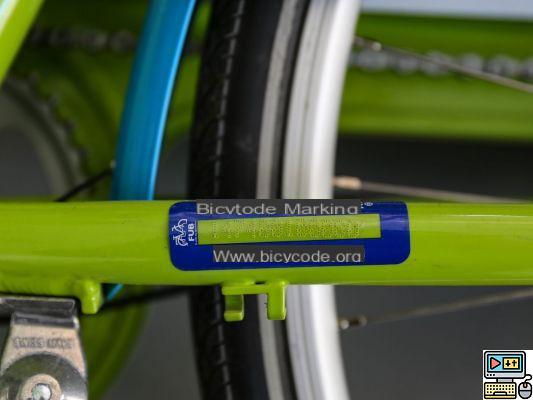 Comment (14)
Comment (14)
Among the legislative measures that came into force on January 1, 2021, the mandatory marking of new bicycles raises some questions. Let's see what this actually changes...
Currently booming, the bicycle market is however hampered by the many thefts suffered in particular by urban cyclists. In 2018, nearly 300 households reported the theft of a bicycle, a stable figure since 000. Unfortunately, of the less than half of bicycles found, only 2006 to 2% are returned for lack of identification. In order to fight against this scourge and return cycles more easily to their owners, a specific measure of the Mobility Orientation Law (LOM) has just come into force: the marking of new bicycles compulsory on January 3, 1.
Published in the Official Journal on November 23, 2020, the implementing decree concerning the identification of cycles also specifies that bicycles sold second-hand by professionals must be marked from July 2021. Only cycles for children (wheels under 16 inches), trailers and personal transport vehicles (scooters, etc.) can do without such marking.
Single number and national file
The marking consists of the application on the frame of the bicycle of an identifier provided by an approved operator from the national file manager. It must be unalterable and easily readable when the bike is parked. It can be an engraving of the frame protected by a sticker, the principle used for the Bicycode, or a secure adhesive which itself bears the identifier.
Bicycode marking by engraving on the frame. © Bicycode
The unique identifiers assigned to bicycles are recorded in the Single National File of Identified Cycles (FNUCI), a database set up as part of the LOM. This is managed by Apic, an association for the promotion and identification of cycles and active mobility created by the Federation of Bicycle Users (FUB) and the Union sport & cycle. Of course, the FNUCI can be consulted by law enforcement, customs and pound agents, as well as by operators authorized to issue identifiers.
Deter thieves and avoid concealment
With this solution, the primary objective is to limit the possibilities of concealment. Anyone wishing to buy a second-hand bike will eventually be able to check that the code is present and thus ensure that they are not coveting a stolen bike. Verification will be all the easier since individuals will also have access to the bicycle identification file in order to quickly verify whether the seller is indeed the legitimate owner.
On the other hand, it will not change much for stolen bicycles sent abroad, for lack of international cooperation for this problem.
No gray card
Although the bicycle identifier is linked to the coordinates of its owner, this marking is in no way equivalent to a registration. Contrary to what happens with speedbike type bikes, it is therefore not necessary to hold any certificate.
How and where to have your bike marked
If professionals must offer at least one marking solution for the models they have sold since January 1, 2021, it is also possible to do the process yourself for a bike that you already own. To do this, simply contact an approved body. The best-known process remains Bicycode engraving, which is officially recognized, but there are other solutions: Auvray engraving, tamper-proof adhesive badges at Recobike at Paravol, etc. Prices range between around €5 and €50. Some local associations even offer free markings.
In the event of a change of ownership, a declaration must be made to the operator who provided the identifier of the bicycle in order to indicate the new contact details. The same applies in the event of theft or destruction of the bike, the declaration having to be made within a maximum period of two weeks after the event. These steps are fortunately free for a security which, hopefully, will make it possible to curb the traffic of stolen bicycles.


























